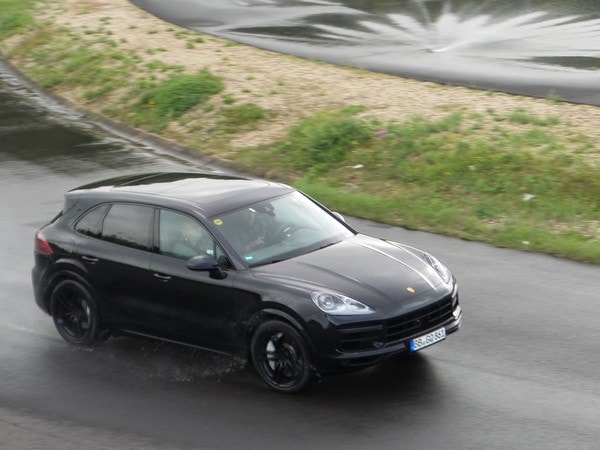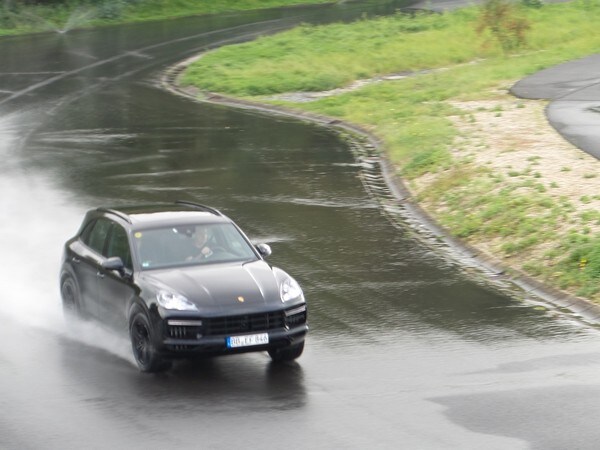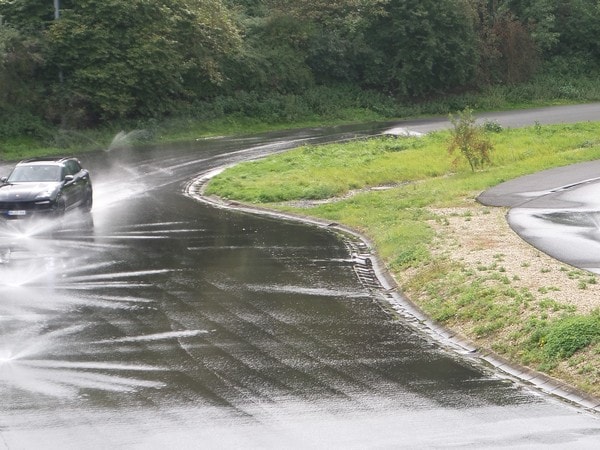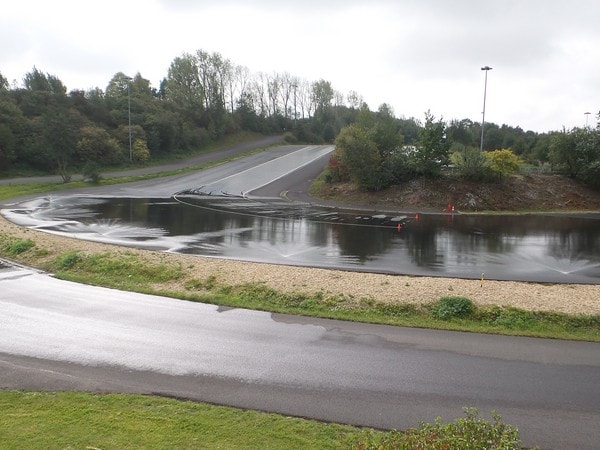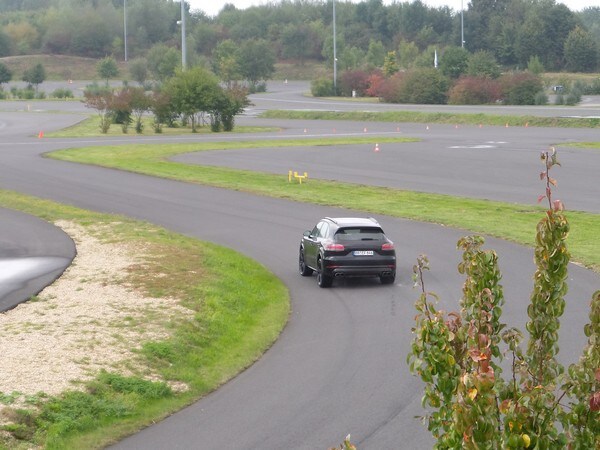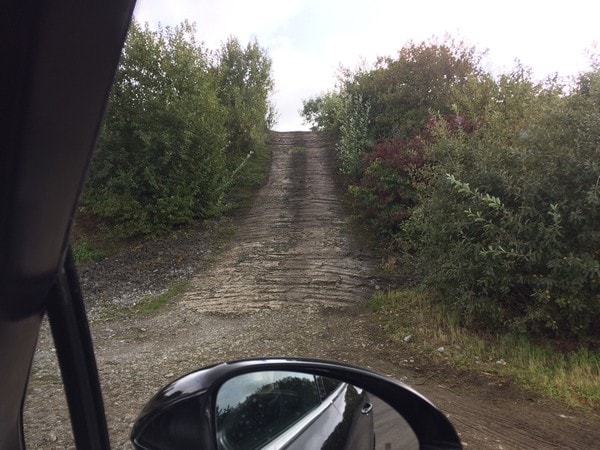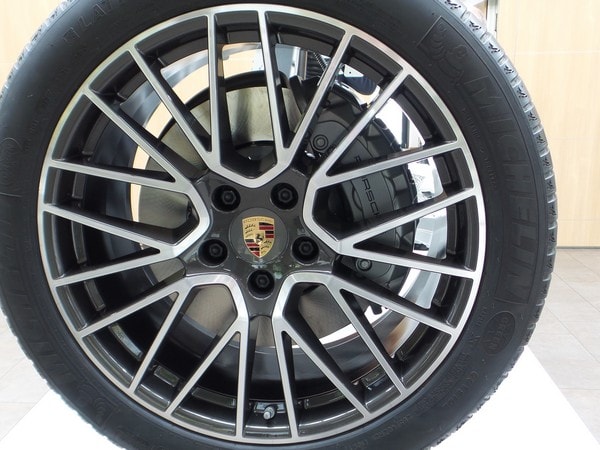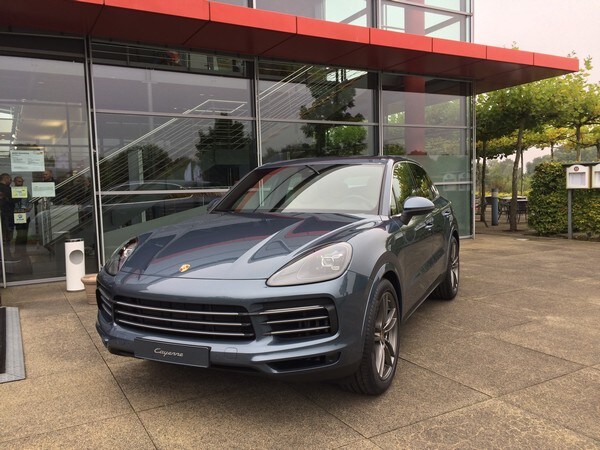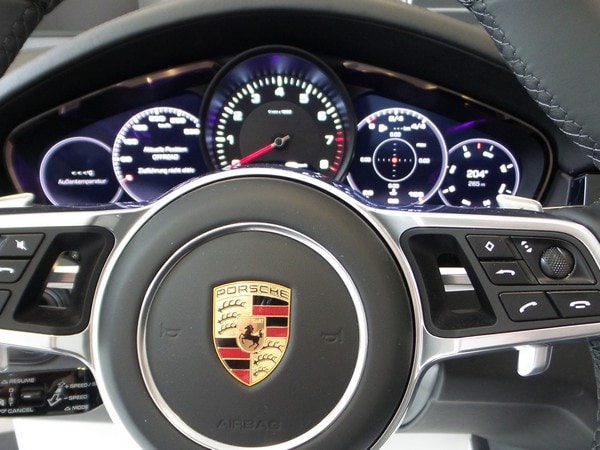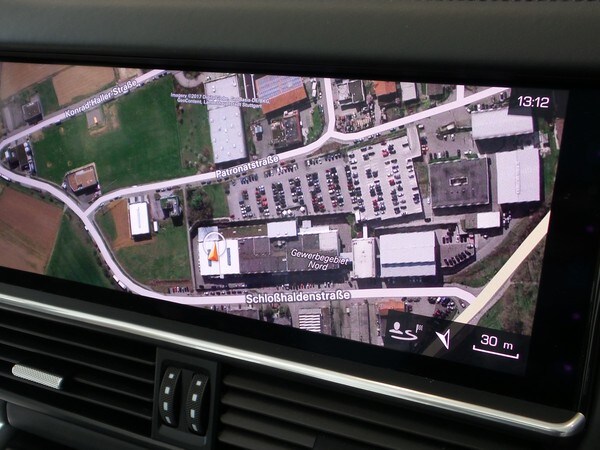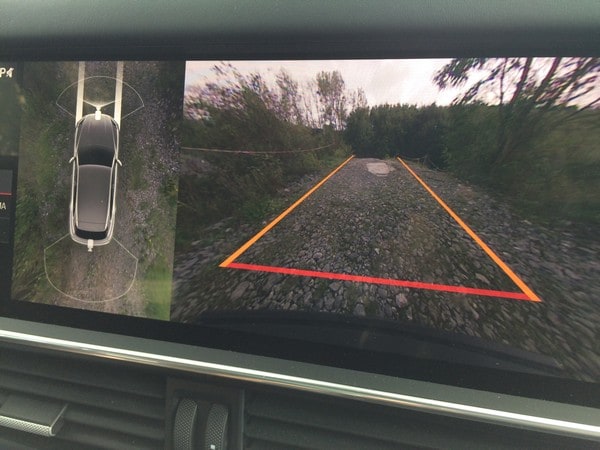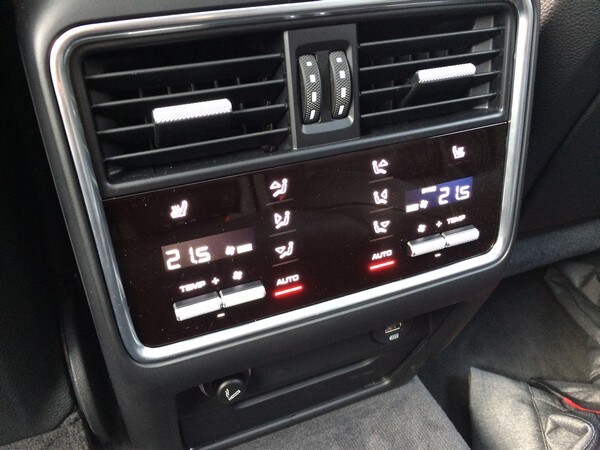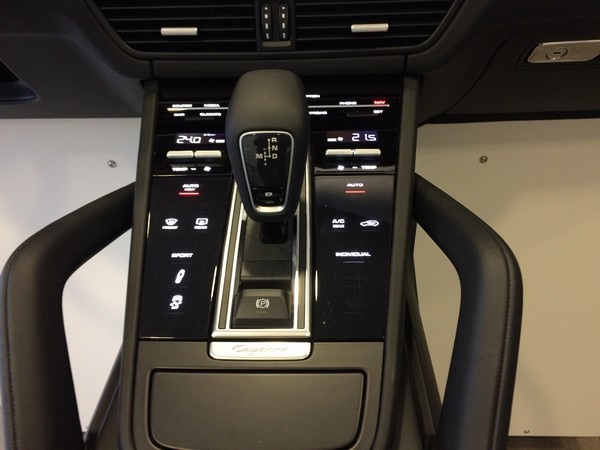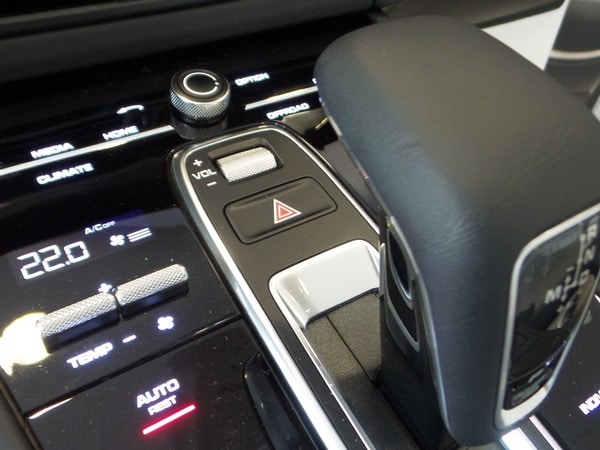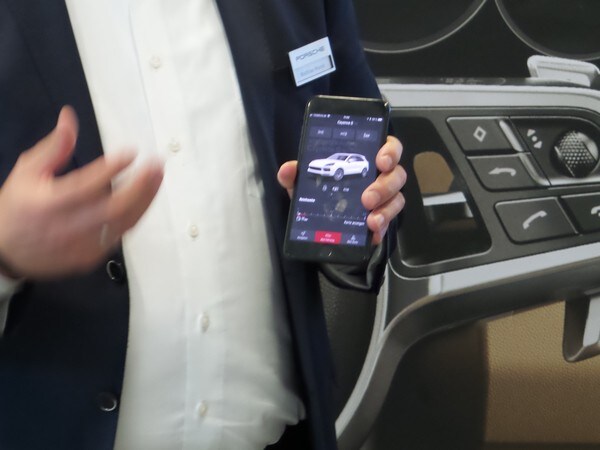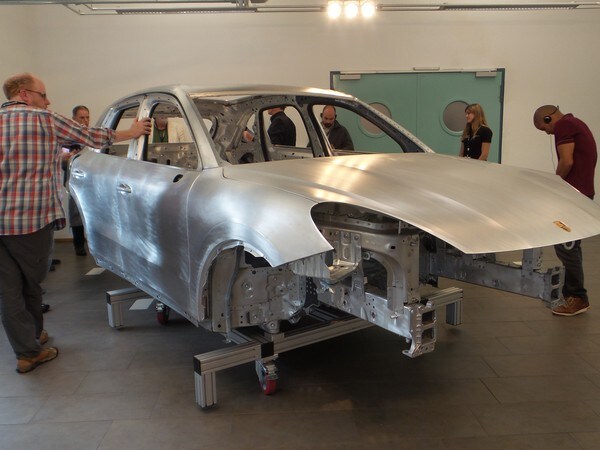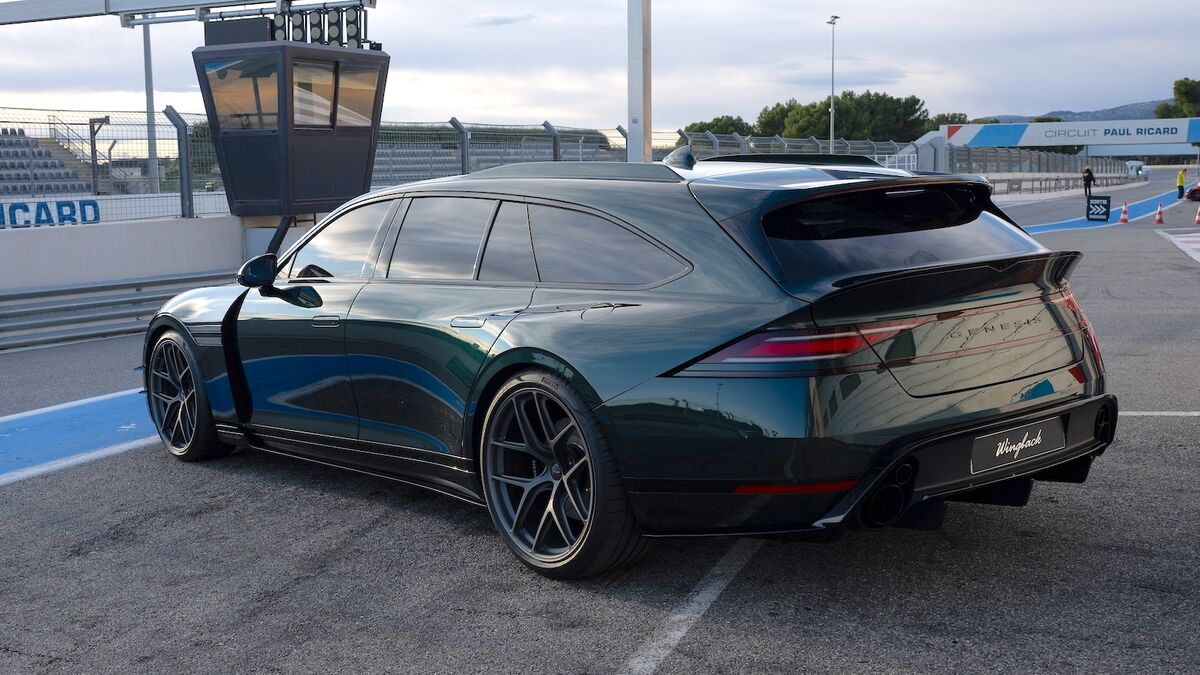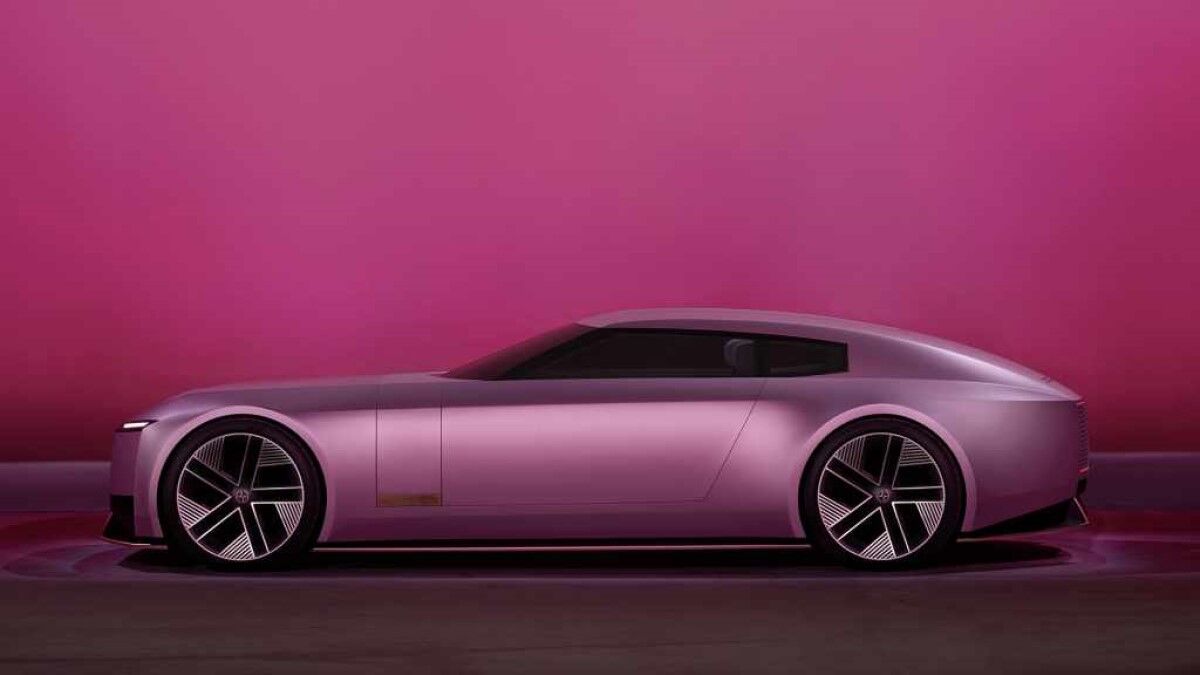When it launched in 2003, the Porsche Cayenne was both admired and derided. Purists were aghast that the famed German maker of some of the world’s finest sports cars would build a sport utility vehicle. But admiration soon took over as the Cayenne became a vital member of the Porsche family. It quickly became the brand’s best seller, moving over 270,000 units worldwide, and most of all proved itself both a useful vehicle and one that was highly capable on the track and the dirt. Most of all, it was a Porsche, and in that respect stayed true to the brand’s performance heritage.
In 2010 the second-gen Cayenne debuted, improving on its former self with reduced weight, new powertrains that included hybrid and diesel variants, and new technology. That generation, which will have one last go for the 2018 model year, has also been an overwhelming success, selling over half a million models.
Now, the 2019 Porsche Cayenne is just around the corner. This third-generation Cayenne is truly all-new. Porsche’s latest performance SUV recently made its debut at the Frankfurt auto show, showcasing fresh, turbocharged V6 and V8 engines that add more power to motivate a vehicle whose overall weight has been decreased roughly 140 pounds. We’ve already written about that preview of the 2019 Cayenne, Cayenne S and Cayenne Turbo.
Technical deep-dive
Porsche has given us an even deeper dive into its upcoming Cayenne, which goes on sale in the United States in mid-2018. For this tech briefing, Porsche invited us to Dusseldorf in its home country of Germany to fill our brain with details large and small about the 2019 Cayenne. Over an entire day, we listened to engineers speak about the most intricate parts of the Cayenne and the rationale for making it so, from the 3-chamber air suspension system to the latest version of its active safety and driver-assistance features. We must have heard a thousand different points. Here we break out 10 of the most pertinent.
Before we share those, you may be wondering: "Did you drive it?" That will happen in the coming weeks, but for an appetizer Porsche engineers gave us rides around a closed track, and even took us off-roading in the new Cayenne. Our initial impressions of those "taxi rides," as Porsche called them, follow. (UPDATE: We’ve driven it, and you can read our driving impressions in this 2019 Porsche Cayenne First Review.)
First, here are the 10 most interesting features that stood out to us.
1. It’s got staggered wheels: For the first time, the Cayenne wears different size tires in the front and rear. The Cayenne lineup wears rubber ranging in size from 19 to 21 inches, but all are distinguished in that the rear tires are wider than those in front. The reason for this is to further improve handling. Putting more rubber to the road — literally — enhances steering precision and agility, not to mention stability for better comfort and more driving confidence. In this respect, the Cayenne is in good company: The flagship 911 sports car has a similar setup
2. It offers rear-axle steering: Here’s another way the Cayenne channels the 911. With this option, the Cayenne’s rear wheels turn slightly along with the front wheels. What does this do? A few things, and all of them improve the way the vehicle steers. At low speeds, it enhances maneuverability since all four wheels are turning instead of just two. At higher speeds, Porsche engineers say it increases overall stability while also improving agility.
3. It can prevent brake dust: Among the Cayenne’s biggest headlines is an all-new technology to brake hardware that reduces brake dust, which can be an issue with Porsches. It’s called Porsche Surface Coated Brake (PSCB for short), and at $3,490, this optional system falls between the standard setup and the ultra-high-performance (and at over $9,000, ultra-expensive) carbon ceramics. Standard in the Cayenne Turbo and optional on other models, PSCB uses a tungsten carbide coating that is said to improve performance, reduce dust and corrosion, and increase durability. In fact, Porsche engineers say these brakes should last at least 30 percent longer than the standard setup. Porsche is excited about this new technology, and while it’s debuting on the Cayenne, you can almost bet it will arrive in other models down the line.
4. It can protect rims, too: If you’ve ever heard that ghastly grind when nearing a curb, you know the ache of "curbing" a wheel — getting too close and scraping up that pretty rim. The new Porsche Cayenne offers a system to prevent that. As part of the ParkAssist Plus package, the screen displays an image of the vehicle on the central 12.3-inch screen, highlighting its rims. At speeds below 6 mph, it will warn the driver of a potential collision — and scrape — between the tires and rims.
5. It can park itself: Also part of the Park Assist Plus package, this feature enables you to park the 2019 Cayenne into a space remotely — as in, from outside the vehicle. Called Garage Pilot, this feature would be helpful in super tight spaces, where the Cayenne would fit, but it would be difficult to open the doors. Additionally, the Cayenne offers Active ParkAssist, where the vehicle can back itself into or drive itself out of a perpendicular or parallel space while you’re behind the wheel.
6. It’s filled with technology: For all their impressive driving manners, it’s easy to forget that Porsches offer robust infotainment offerings. The new Cayenne gains the 12.3-inch screen that just debuted in the Panamera, but with even higher resolution. Thanks to a proximity sensor, the system snaps to attention as soon as your hand reaches for the screen. From there you can swipe, customize and Google Map to your heart’s content. The vehicle’s LTE connectivity and Wi-Fi capability mean it can always be connected, and you can connect your devices to it. The system offers Apple CarPlay compatibility, but take heed if you’re an Android addict: Porsche execs say Android Auto isn’t in the cards right now.
7. More active safety systems, too: Going hand-in-hand with the infotainment tech is the tech and hardware to make driving less stressful and safer. Among the offerings are adaptive cruise control, lane-departure warning, blind-spot monitoring, night-vision assist and the self-parking features described above. Standard on the Cayenne will be systems that warn of a collision with an object or person, and ultimately automatically apply the brakes. New for the Cayenne is active lane assist to keep the vehicle within lanes and systems that can do everything from warn a driver of drowsiness to stop the vehicle in an emergency and call for help.
8. It can be fitted with an airbrake: Here’s a brake of a different kind, and another first for Porsche. The Cayenne Turbo is said to be the first SUV with an adaptive roof spoiler. This spoiler above the rear window adjusts to various positions based on speed and circumstances. At speeds below 100 mph, it remains in the normal position. Pushed above 100 mph — on a track only, we’d hope — it rises .78 inches to increase downforce and stability of the rear axle. In the manually selected Sport Plus mode, it rises 1.6 inches to increase downforce for racing endeavors. A fourth position is called "compensation," and it raises the spoiler 2.36 inches when the panoramic roof is open to compensate for the loss of spoiler efficiency due to windflow. Finally, there’s the Airbrake position. This raises the spoiler to the maximum 3.1 inches when emergency braking is necessitated at speeds over 105 mph. As an example of its aid, Porsche says that braking distance would be reduced about 6.5 feet from a speed of 155 mph. Can you tell they have no-speed-limit autobahns in Germany?
9. It can venture off-road. The first-gen Porsche Cayenne was actually a formidable off-roader. With a 2-speed transfer case and low-range gearing, it could crawl through serious muck. With the second-gen (and current version) that hardware went out the door. Such off-road wares can be pricey and heavy, and in reality, how many Cayenne drivers do you know who would use it? Still, the Cayenne is an SUV with standard all-wheel-drive, as is the all-new 2019 model. The new Cayenne also has some off-road chops, even if its overhangs reduce approach and departure angles. The Cayenne has the ability to venture off-road with various terrain modes that optimized the vehicle’s powertrain and all-wheel-drive system for settings like mud, gravel, sand and rocks. Additionally, a rear differential lock is available for even better performance and traction, both on road and off.
10. More are coming: The 2019 Porsche Cayenne will debut in the U.S. in base form with 3.0-liter turbo V6 good for 340 horsepower, a twin-turbo 2.9-liter V6 that spits out 440 horsepower in the Cayenne S, or, in the Cayenne Turbo, a 550-horsepower 4.0-liter twin-turbo V8. We can only guess that an even higher-out Turbo S will arrive at some point, and Porsche officials also point to another hybrid model in the future. If you’re hoping for a diesel Cayenne again in the U.S., that option appears dead.
Bonus round: track tasted
As something of a dessert after being in closed rooms listening on headsets as German engineers’ enthusiasm was translated to English, we got a sample of what the Cayenne can actually do. These were pre-production models, and as such they were piloted by Porsche personnel. But the taste was a treat and left us desiring more.
First were a couple quick spins around a tarmac. Still moist from rain in parts and intentionally wet in another, this closed circuit showed off the Cayenne’s handling. It impressed. If not for the higher seating position, you’d think this were a sports car. Exceptional handling has always been a Cayenne hallmark, and what separates it from other SUVs. If this is any indicator, the next-gen version will further carry that torch.
From there, we briefly went off road in the new Cayenne. While it doesn’t have the low-range gearing of the first gen or even quite the same approach and departure angles of the last one, the latest Cayenne tackled mud, steep hills and general muck with aplomb. We highly doubt many or perhaps any new Cayenne buyers will tread farther off road than a dirt trail, but should they plan to do so, the Porsche is surprisingly capable given what it can do on a track.
Coming next year
Order books are now open on the 2019 Porsche Cayenne, but you’ll need a little patience before getting one in your hands. Deliveries are expected mid next year. Including the $1,050 destination fee, the 2019 Cayenne is priced from $66,750 for a base model to over $125,000 for the Cayenne Turbo. We’re set to test-drive Porsche’s newest SUV soon, so stay tuned for our first impressions from the driver’s seat.
